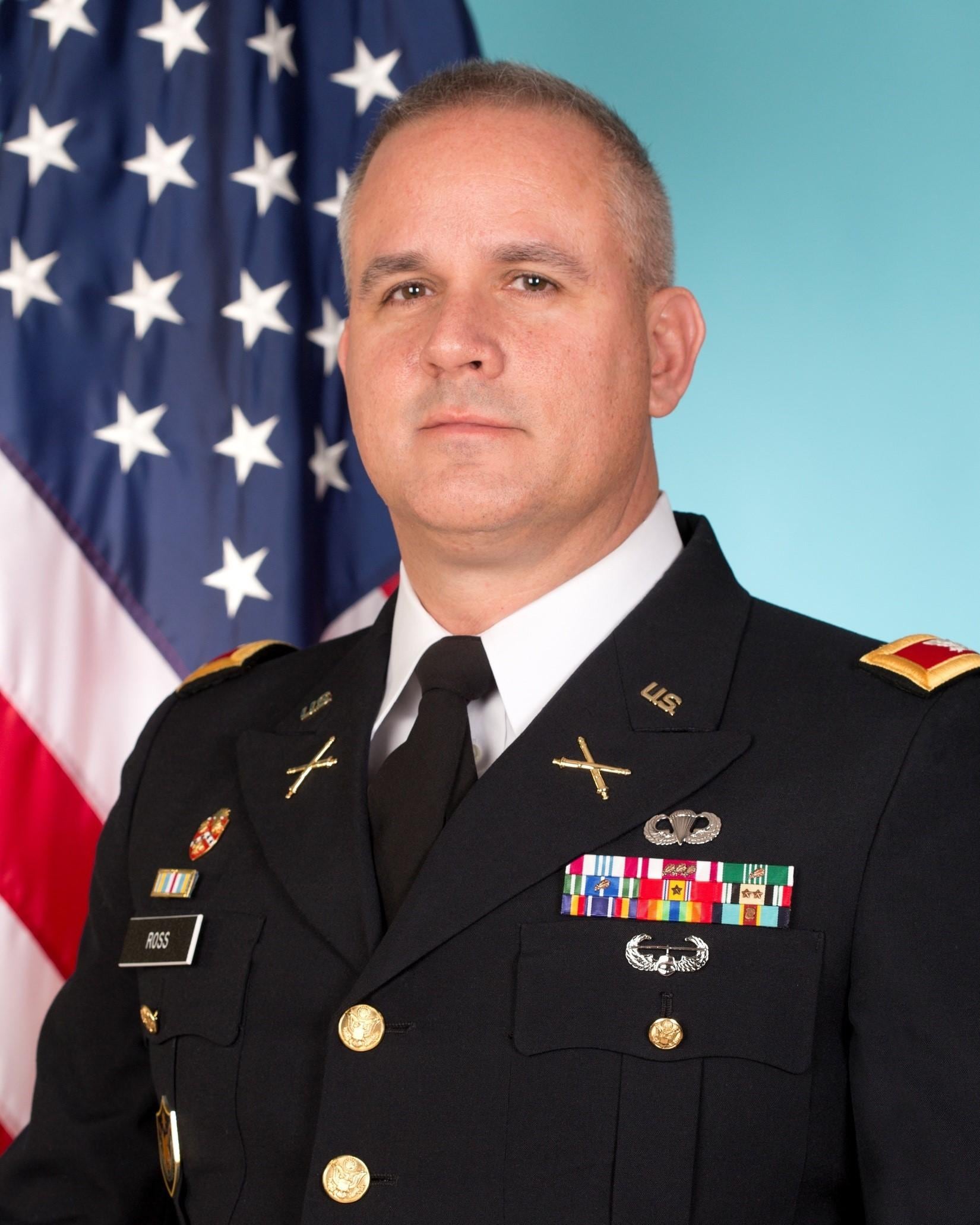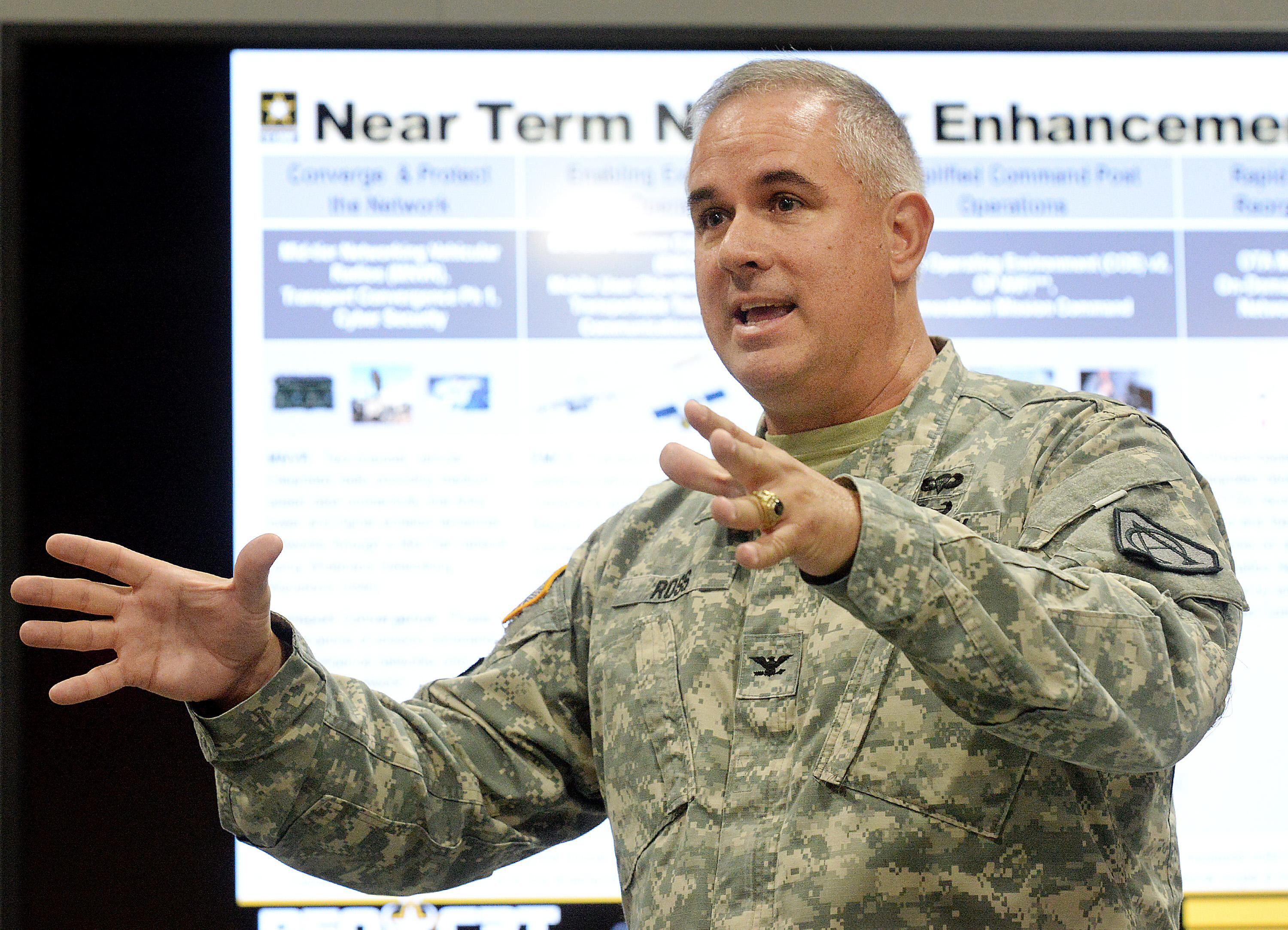COL James Ross has led Army Program Executive Office Command Control Communications-Tactical's Tactical Radio program office since mid-2014. He is responsible for the life cycle management of all Army tactical radio systems, and directs the efforts of up to 400 military, government civilian and support contractors with a budget exceeding $2.1 billion. Prior to this position, he served as the military deputy to the director of the Armament Research, Development and Engineering Center in Picatinny Arsenal, New Jersey.
He spoke with C4ISR & Networks Editor Barry Rosenberg about competition in the radio marketplace, the fiscal environment as it relates to radio procurement and lessons learned in the low-rate initial production (LRIP) of the Rifleman and Manpack radios.
With support of the war fighter a given, what are your top priorities?
COL JAMES ROSS: Army Chief of Staff GEN [Mark] Milley made it very clear that the number one priority for the Army is readiness; there is no other number one. So in tactical radios our number one priority is fielding radios to soldiers.
And where does that stand?
ROSS: Right now there are some areas of the network — the mid-tier, for instance — where we do not have any radios. So the formations are not as ready as they could be right now. We have not fielded all of the Manpacks and Riflemans to all the formations that we need to, so they are not as ready as they could be right now. They are capable, but in terms of full readiness, we are not totally there yet.
Do you think you are going to have the funding to do that? The Warfighter Information Network-Tactical Increment 2 full-rate production decision was approved in 2015, but there's only enough funding to field to a couple brigade combat teams (BCTs) a year.

COL James Ross, Project Manager Tactical Radios
Photo Credit: Army
ROSS: Sure, and that is true. Funding is always going to be a challenge. We have to look at that in cooperation with the G-8 and G-3/5/7. What are the priorities? What are the units that we will field? How many are we going to do? That presents its own unique problems. It presents problems in terms of getting field equipment to soldiers, but it also presents problems in terms of the marketplace.
[How do we maintain] a viable competition when we may be only competing two BCTs worth of radios a year? How do we ensure that there is going to be a stable marketplace for that? That is clearly a problem that we are presented with right now in terms of what decreased funding means. It is not just being able to buy things now, but being able to secure the option to buy those well into the future.
So those are some things that we are looking at in terms of how do we do that. How do we sustain the competition? How do we have enough out there so companies want to make an investment in radios? That is something we are clearly working at.
[In future budgets] I think we are going to see some emphasis on the network because the network is a huge enabler for the readiness of our units and the ability to fight. If we are going to follow along with what the chief says in terms of readiness, the network needs to be there to support that.
Staying on the subject of competition and the radio marketplace, please explain PEO C3T's radio acquisition strategy.
ROSS: The first thing I will talk about is our non-developmental item (NDI) strategy, which does not mean development is not being done. It just means that we, the government, are not developing any kind of a cost-plus contract over many years. We said the marketplace is out there. Software-defined radios are produced by a lot of different companies right now so there is a viable marketplace.
We tell them what kind of requirements we want. It is our obligation to be very clear in telling industry what is important to us because they are going to put their dollars into that. The last thing we want is to say "we are really not sure" or "let's see what happens." No, we need to be very clear. An NDI strategy is based on clear and achievable requirements.
The industry partners that we have need to understand that they invest their money. They bring us their solutions via competition. We will look at them, test them and get them in the hands of soldiers, and then buy more of them based on how many are out there.
If we have two vendors, we may decide on some split strategy. We may only go with one. There is nothing that says we won't — possibly for the future. Maybe we initially will go with more than one. But we want to leave that open so we have the opportunity for innovation so that three years later we say "we want this added" or "can you drop the weight down even more?"
What are some lessons learned with the LRIP for the Rifleman and Manpack radios?
ROSS: What we learned out of that was that there was a lot of opportunity for improvement. Our radios are capable. The LRIP radios went through several tests and they actually did pretty well. What we found out was that requirements will change in terms of size, weight and power.
And training is needed. For instance, with the Manpack radios, we found out what the units were training on was insufficient, that they did not know all the capabilities.
We had some reports, for instance, on heat. We always want to reduce heat. Radios by nature are an electronic piece of equipment so they are going to have some heat signature to it. But just like your laptop, if you stick it in your backpack and you wrap it in something, it is going to get very hot. The same thing happens with our radios. A soldier puts it in the bottom of a rucksack, leaves it there, has the antennas stick out and thinks it is good to go, only to find out it is hot.
So what do we do about that? We developed a new backpack to carry the radio that gives it some breathable air. That sounds like something simple but really it made a big deal in terms of soldier load in what they are carrying. We work closely with Natick Soldier Systems [in Massachusetts] to be able to do that in terms of how will they wear it? Where is the best place to put antennas? Those LRIP systems allowed us to ask, "are they meeting the need?"
There are two pieces to the radios. There is obviously the piece of equipment, the radio itself, and then there are the waveforms, too. We operate on mainly the Soldier Radio Waveform, SRW, at the lower levels, and the Wideband Networking Waveform, WNW, at the mid-tier. [WNW] has not been totally fielded yet but it has been tested with the maneuver radio — the Mid-tier Networking Vehicular Radio.
That did well at NIE on its limited user test. For the LRIP radio, the Soldier Radio Waveform has shown viability although people want greater ranges. Everyone wants greater ranges. We need to work that in terms of doing that efficiently?
We are not losing the SINCGARS [Single Channel Ground and Airborne Radio System] capability of dedicated voice. It is still going to remain in the formations. But for data, which is growing, you need a waveform such as SRW to be able to do that. We have to look at meeting the needs of the platoon and the company with the waveform, and with other things being developed in the labs that we can put back into the radio. We're talking with our vendors to make those radios much more capable.
We are already going to see that in the new Rifleman. I highly anticipate we are going to see that with the new Manpack in terms of efficiencies with power, battery life, range, and all those pieces that will help us to provide a better radio for the soldiers.








